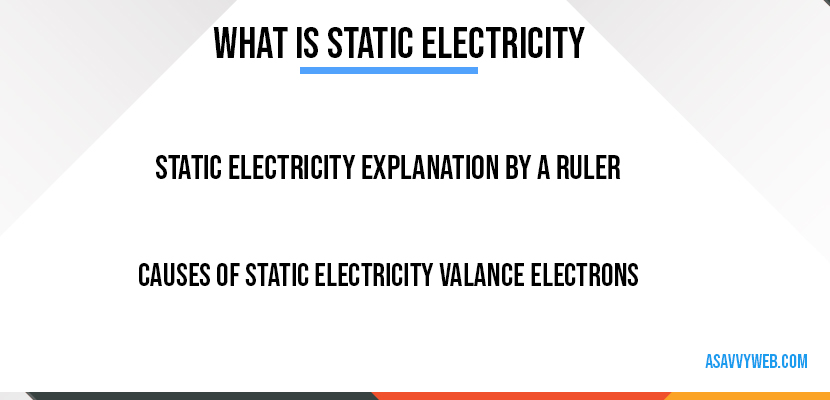Static electricity is electricity that doesn’t move, It is an electric charge held on an object caused by the gain or loss of electrons. Lightning is static electricity suddenly discharging between clouds or between clouds and the ground. Static electricity builds up with friction when two different materials rub together.
Static Electricity Explanation by a Ruler:
Static electricity Example:
A plastic rule can be given an electric charge called static electricity by rubbing it against a T-shirt or a jumper. Static electricity makes small pieces of tissues jump and stick to the ruler.
All objects are made of atoms, each atom has equal number of electrons and protons. Electrons have a negative charge, protons have a positive charge. These charges balance each other exactly to make objects neural i.e unchanged. But friction like rubbing a balloon on ones jumper makes electrons rub-off from the jumper on to the balloon. This charges the balloon with static electricity.
It no has more electrons than protons, so it is negatively charged. And the jumper with more protons than electrons, is positively charged. A balloon that has been charged by friction will attract small pieces of paper.
Causes of Static Electricity Valance Electrons
The word electricity comes from the Greek word electron, which means amber. Amber is petrified tree resin. Basically electricity arises due to valance electrons, i.e the electrons revolving in the outermost orbit of an atom. When these electrons are transferred from one body to another due to friction caused by rubbing, then it is called frictional or static electricity.
The transferred electrons are spread over the surface and remains at rest and hence called static electricity. But when the valance electrons moves through a conductor due to an external field, as in the case of a wire and bulb connected to a cell, then it is called current electricity. Under normal conditions every body is electrically neural. Now when a glass rod is rubbed with a silk cloth the glass rod loses some electrons and the slim cloth acquires these charges.
The glass rod is said to be positively charged and the silk cloth negatively charged. Here the electrons in the glass rod are held less tightly than those in silk cloth. So the electrons transfer is from glass rod to silk cloth. Thus the total number of charges is conserved.
Static Electricity When a Pen Rubbed With Woollen Cloth:
Similarly when a plastic pen is rubbed with woollen cloth, the plastic pen acquires electrons from the woollen cloth. This is because the electrons in the plastic pen are more tightly bound than those in woollen cloth. This is the origin of static electricity and it leads to the fundamental law ‘like charges repel and unlike charges attract’.
Uses of Static Electricity:
Static electricity is like receiving shock when you touch or hug on your clothes identically and the force of attraction caused by charged particles. Static electricity is used in many ways and some of them are way:
| 1- Air Pollution control |
| 2- Crop Spraying |
| 3- Photocopier |
| 4- Xerox Machine |
| 5- Pain Cars |
| 6- Smokestacks |
| 7- Air Refreshers |

